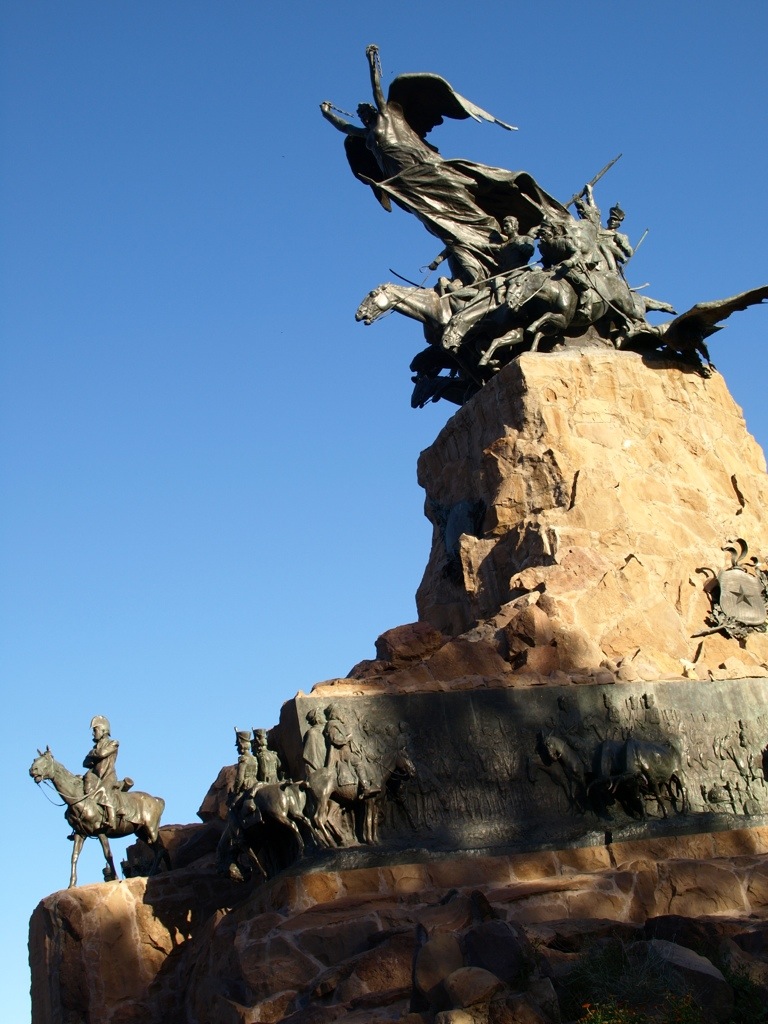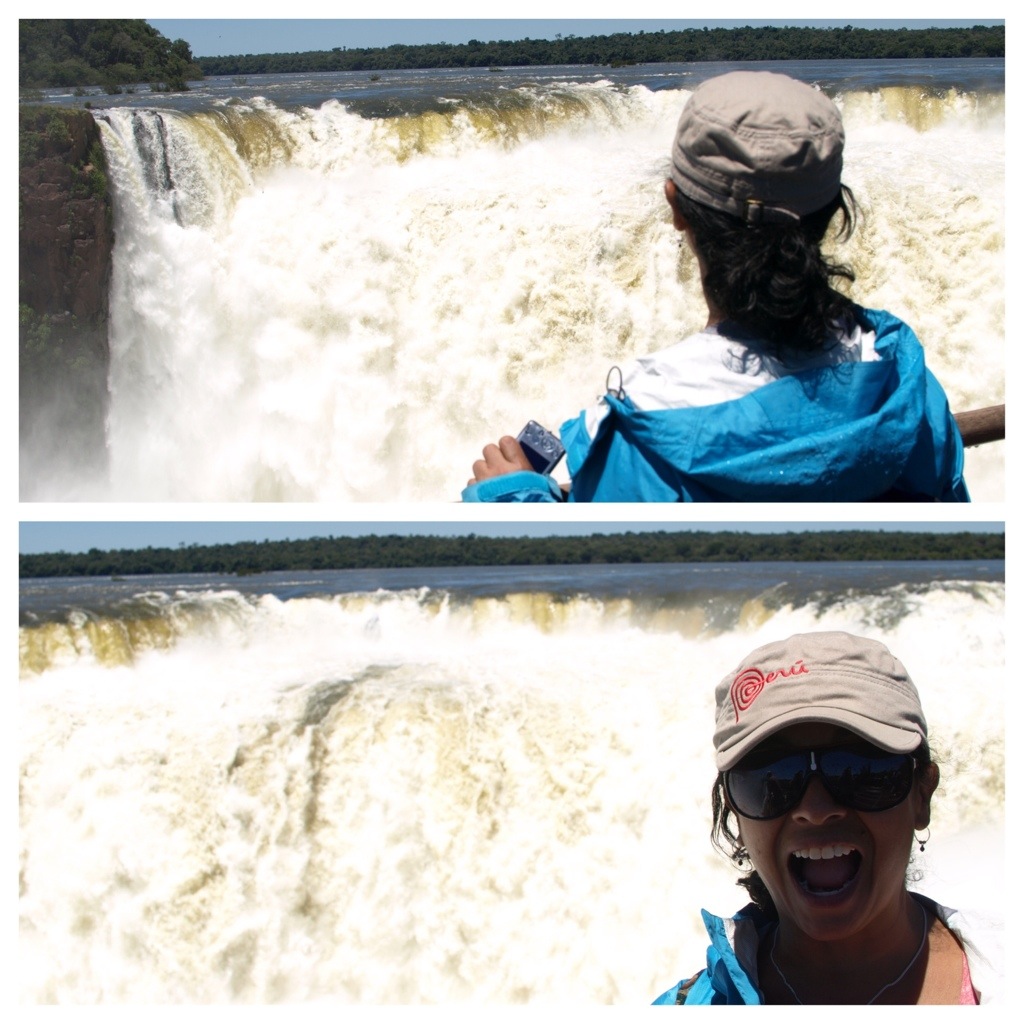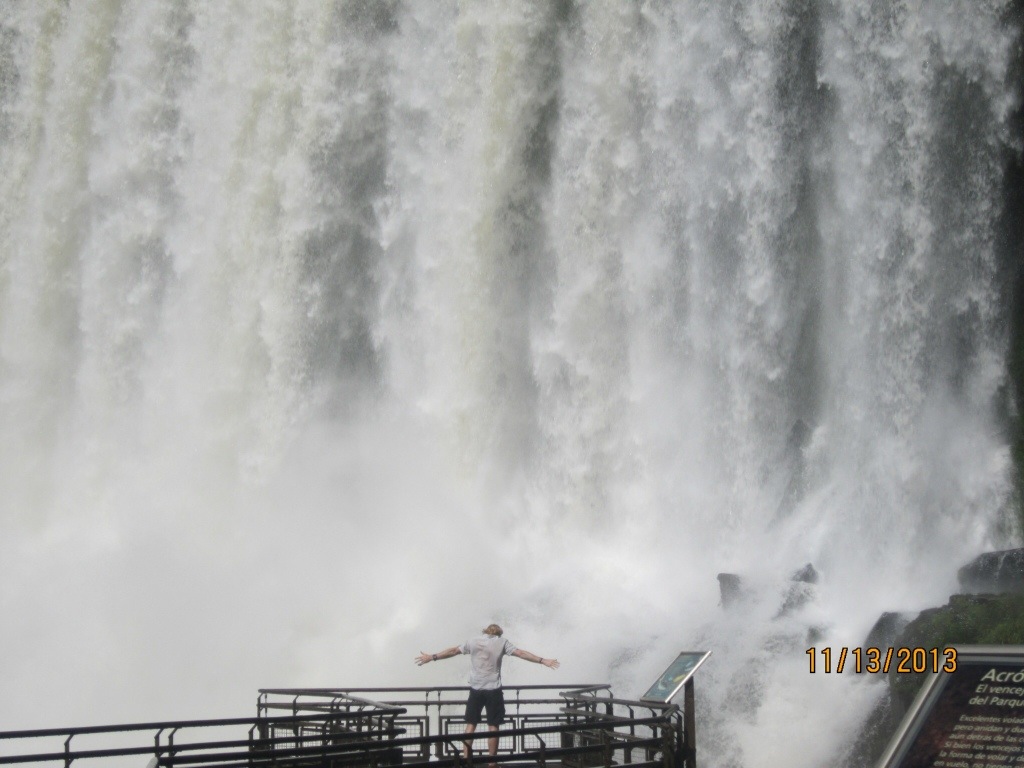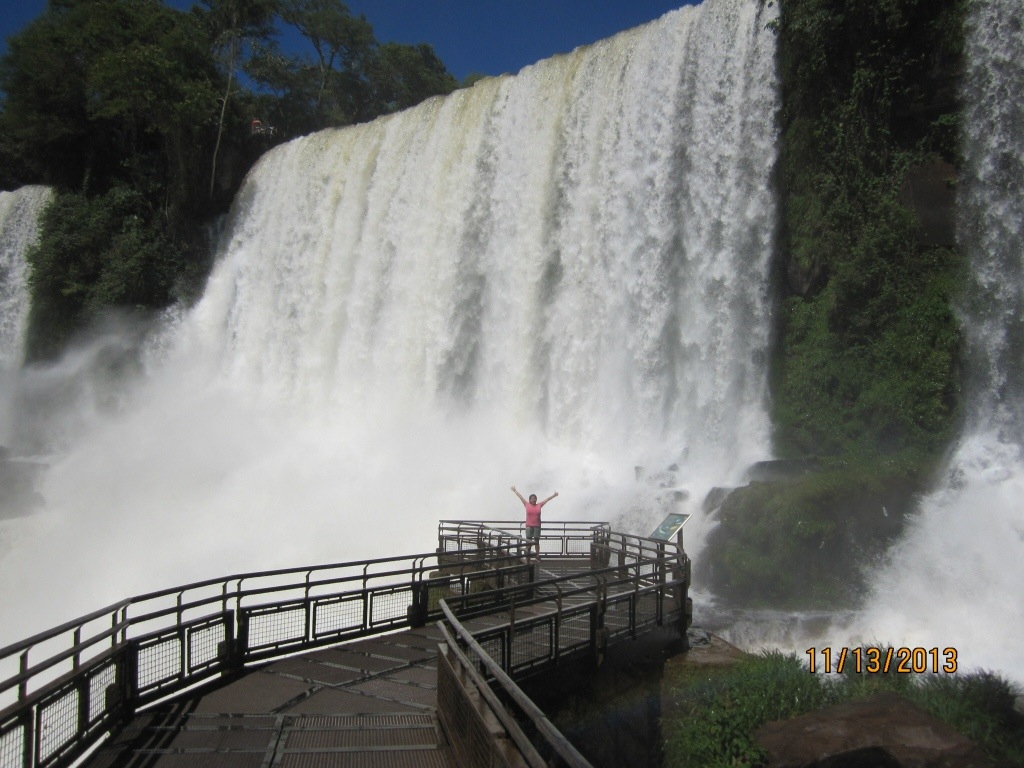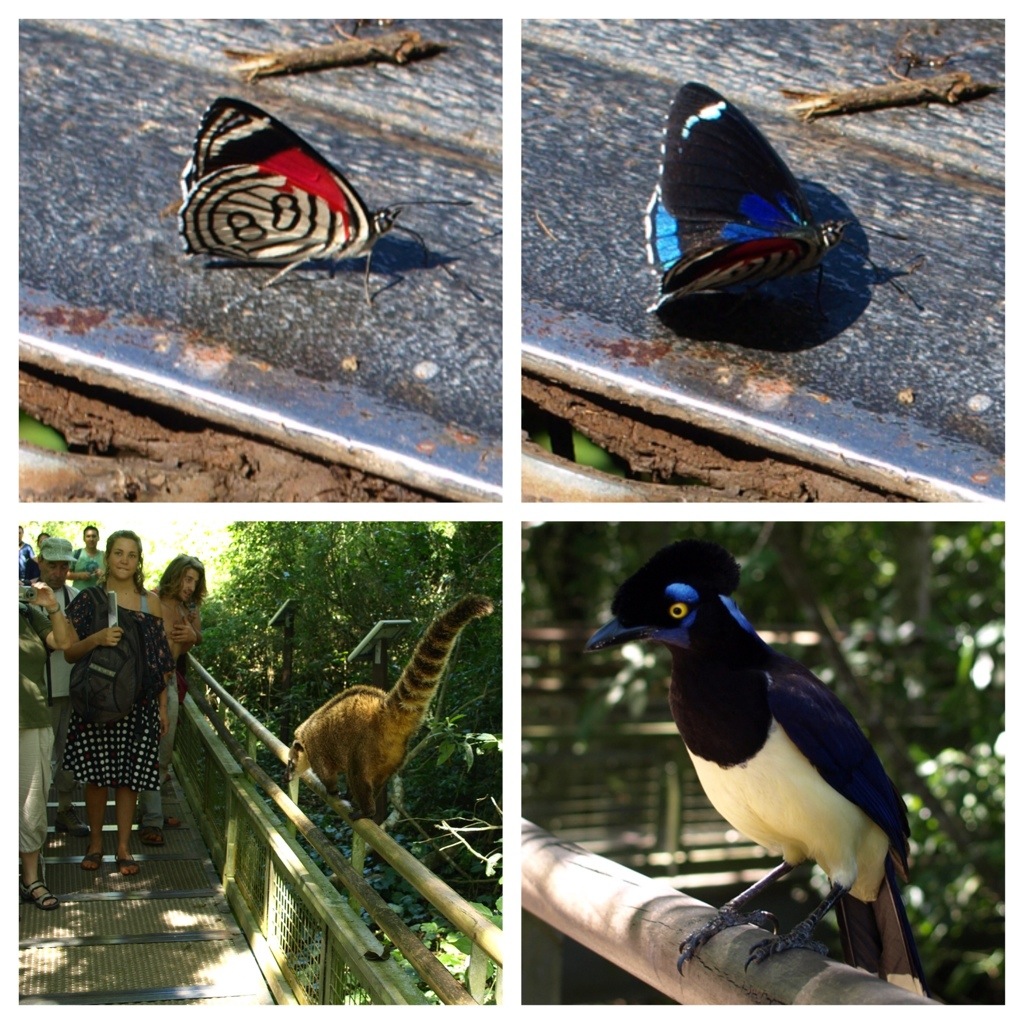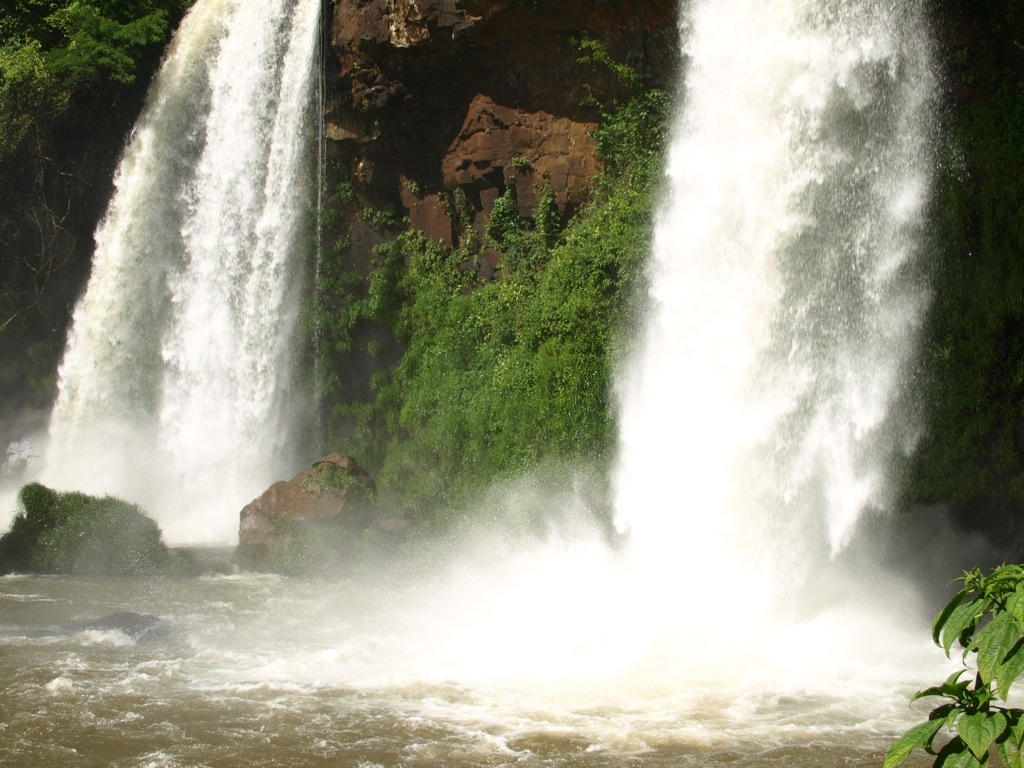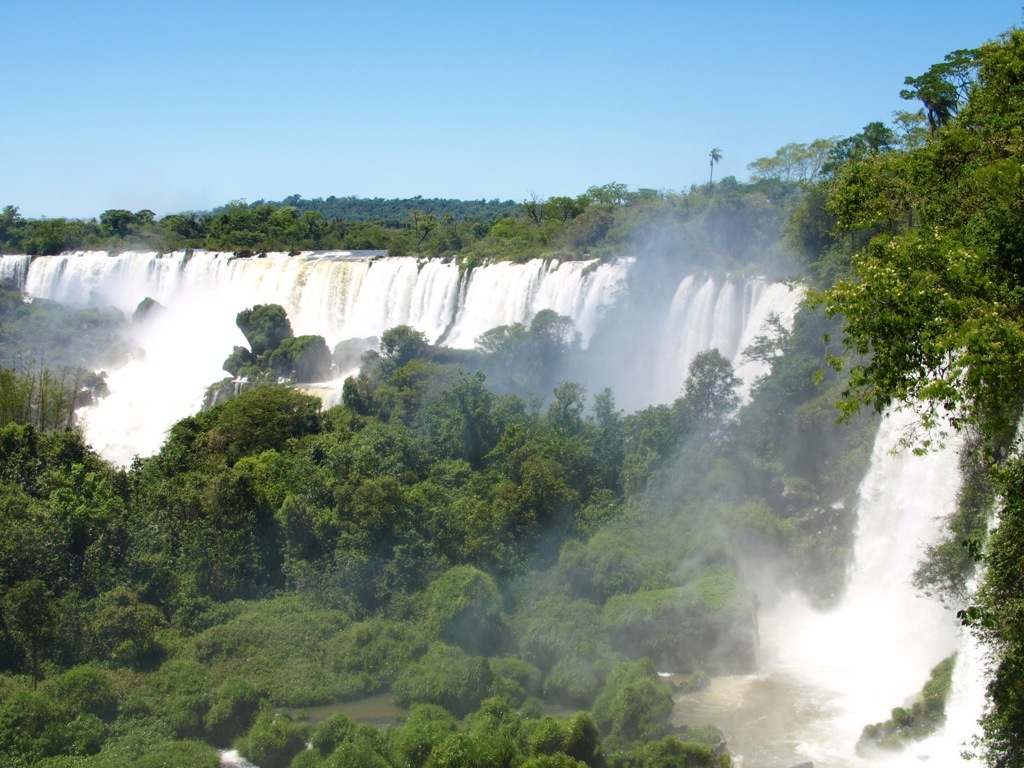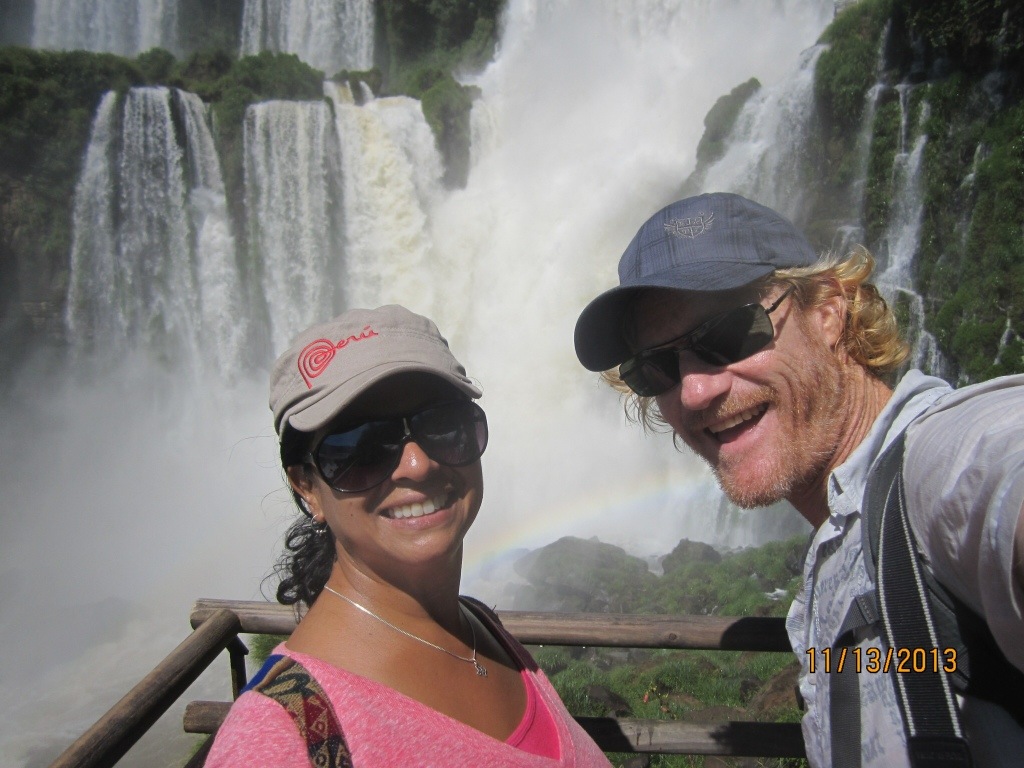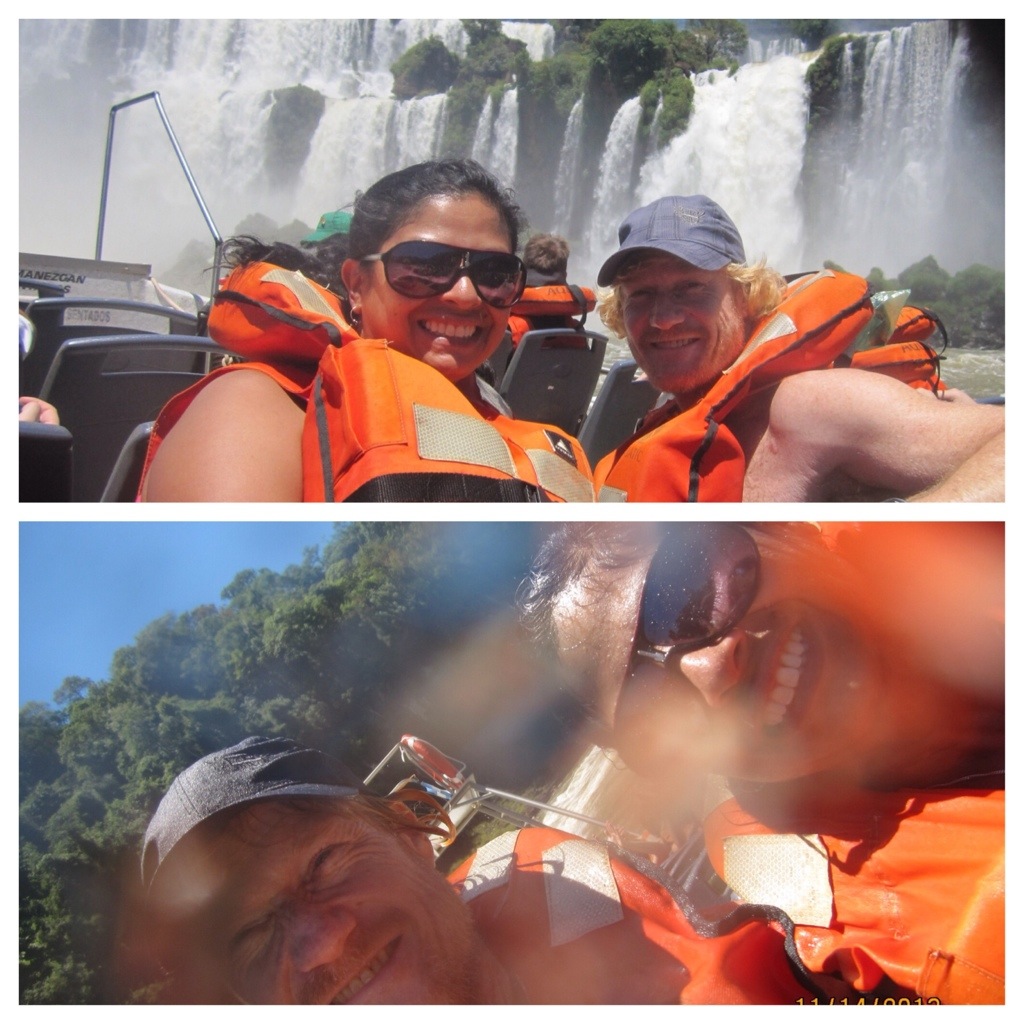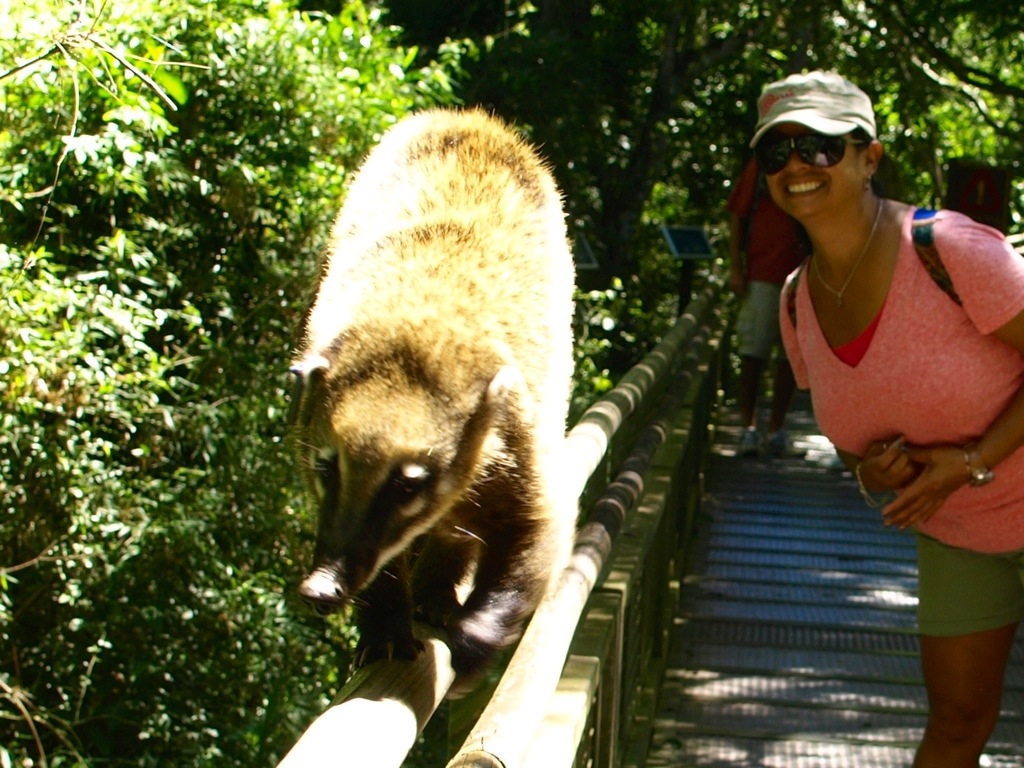(Mendoza, Argentina – 7 Nov 2013) New country. New challenges. New adventures. Argentina, the 5th country on our journey around the world, will certainly provide some thrills and chills. Buenos Aires, Iguazu Falls and Ushuaia- the city at the bottom of the world -are guaranteed highlights, but first….we cross the Andes mountains and check out an interesting little city called Mendoza. Malbec wine, all-natural grass-fed beef, and horseback riding are on the horizon.
Getting Out of Dodge
Leaving Santiago was harder than we expected. Not so much emotionally, because though we enjoyed our month-long stay in this standout city, we were ready to continue our world tour. The hard part was simply getting a bus. We’d originally planned to depart Santiago on Halloween (Oct 31), a Thursday, but for reasons no one could adequately explain, that day was a national holiday in Chile. And so was Friday, thereby creating a four-day weekend for Chileans. The result was that every bus seat out of Santiago was sold before we could snag our two spots. Faced with this dilemma, our next best choice was to leave the following morning. Actually, we could have bought two seats on a 10 PM bus and still left on Thursday, but that meant traveling through the beautiful Andes in the dark of night. Unacceptable! The Andes are something to see, not sleep through.
The next morning arrived and we made it to the bus station, tickets in hand. Our big bags were loaded under the bus and we placed ourselves casually at the bus’s entrance…relaxed, grinning, and ready to board. Then it all went to the crapper. The bus attendant asked us for our passports and reciprocity tariff receipts to Argentina. Tariff what? “Oh, we’ll pay that at the border,” we tell him. We knew about this $160 each tariff, but what we didn’t know is that we couldn’t board the bus without proof that we’d already paid it. Within seconds, the bus attendant shouted for our bags to be removed from the cargo hold. We pleaded our case, but nobody was listening.
Jessica and I were left shocked and chagrined (and pretty pissed) as our bus drove away without us. The most upsetting part of it was that the guy who sold us the bus tickets never mentioned the required tariff. How terribly easy it would have been for him to explain that we’d need to pay the tax first? Aaargh!
As it was, we were dumb-stuck at the terminal, getting advise on what to do next from several similarly uninformed strangers. One person told us that everything was closed for the long holiday and that we have to wait until Monday to pay the stupid tariff. Fortunately, this was not true. The solution was to go online and pay it, which we did. We also got a refund from the mean bus company and repurchased new tickets (from their competitor, HA!) for the following morning (Saturday). Bright side: Bonus day in Santiago!
Traversing the Andes
So glad we didn’t settle for the overnight bus. Snow-peaked mountains became snow-covered mountains as our Saturday morning bus ascended higher and higher into the range. An old abandoned railroad line followed through the same valley as did our highway. Imagining what it must have been like riding that rail in its heyday was wistful fun. The old train mostly chugged between the high mountains, but also tunneled through them when necessary. We saw the train tracks soaring over gorges, too, though sometimes the rails, with ties still attached, sagged helplessly across the gaps because the truss supports had long since washed away.
The funny-looking tunnel things covering the highway (in the pic below) were built to help keep the road passable during the winter.
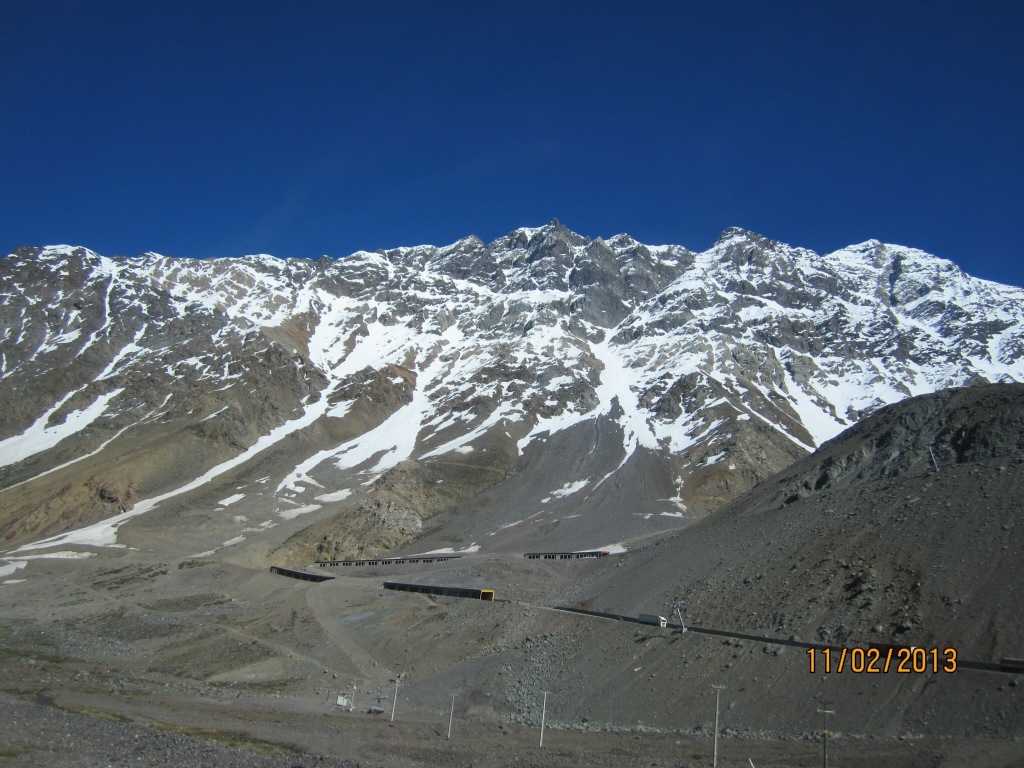
Each curve of the highway brought a new landscape into view. Our bus was not full so both Jessica and I took window seats and repeatedly claimed our side had the most spectacular views. The border between Chile and Argentina splits the range through the middle so when our bus stopped for immigration and customs we knew our passage through the Andes was halfway over. We also felt the bus enjoying more downhill runs than uphill battles once we’d crossed into Argentina.
For as unimaginably long as the Andes north-south run is- the same related burst of mountains stretches all the way from South America up to the Canadian Rockies -its east-west width can be traversed in a matter of hours by bus. By plane, it takes less than 10 minutes to cross them! But then you would miss seeing all their majesty up close and so beautiful.
Mendoza
The city of Mendoza, Argentina was not on our radar screen (meaning, we’d never heard of it) until Jessica read the book Alive, about the Uruguayan rugby team, some of whom survived more than months in the Andes after their plane crashed. The plane’s original flight plan had them crossing the Andes on Thursday, May 12, 1972, but a storm forced them to land in Mendoza until the weather cleared the next day (on Friday, the 13th). The book’s positive depiction of Mendoza prompted us to look into it further. We liked what we read and reserved a hostel in Mendoza for four nights.
Sites from our city tour and bike ride.
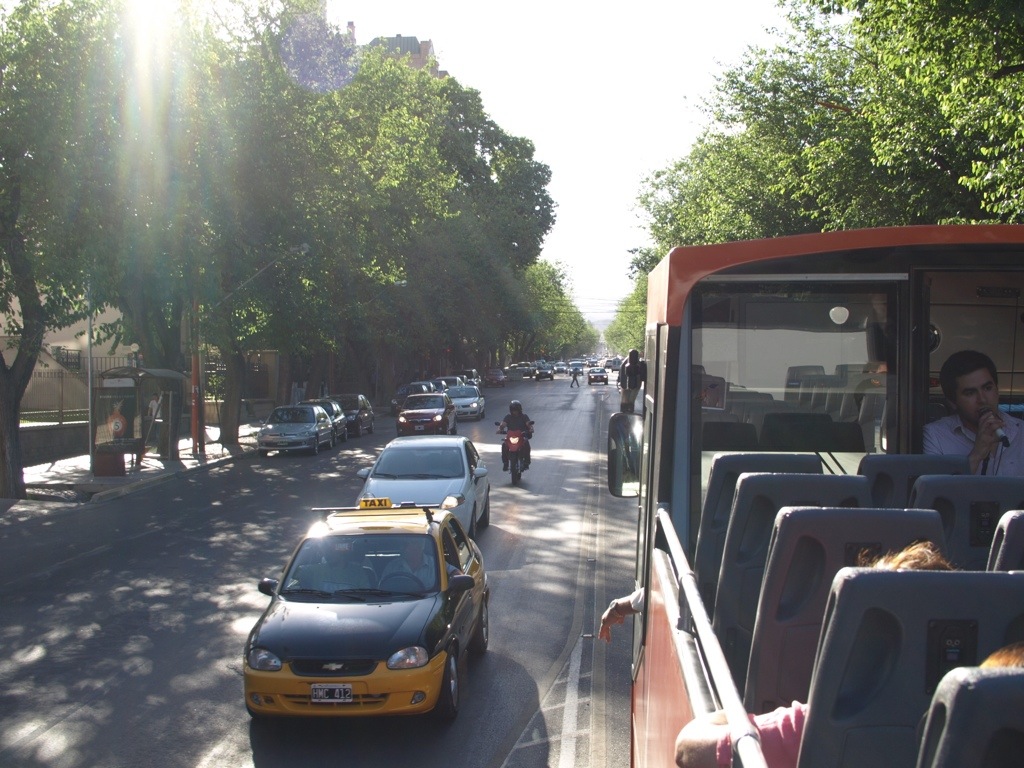
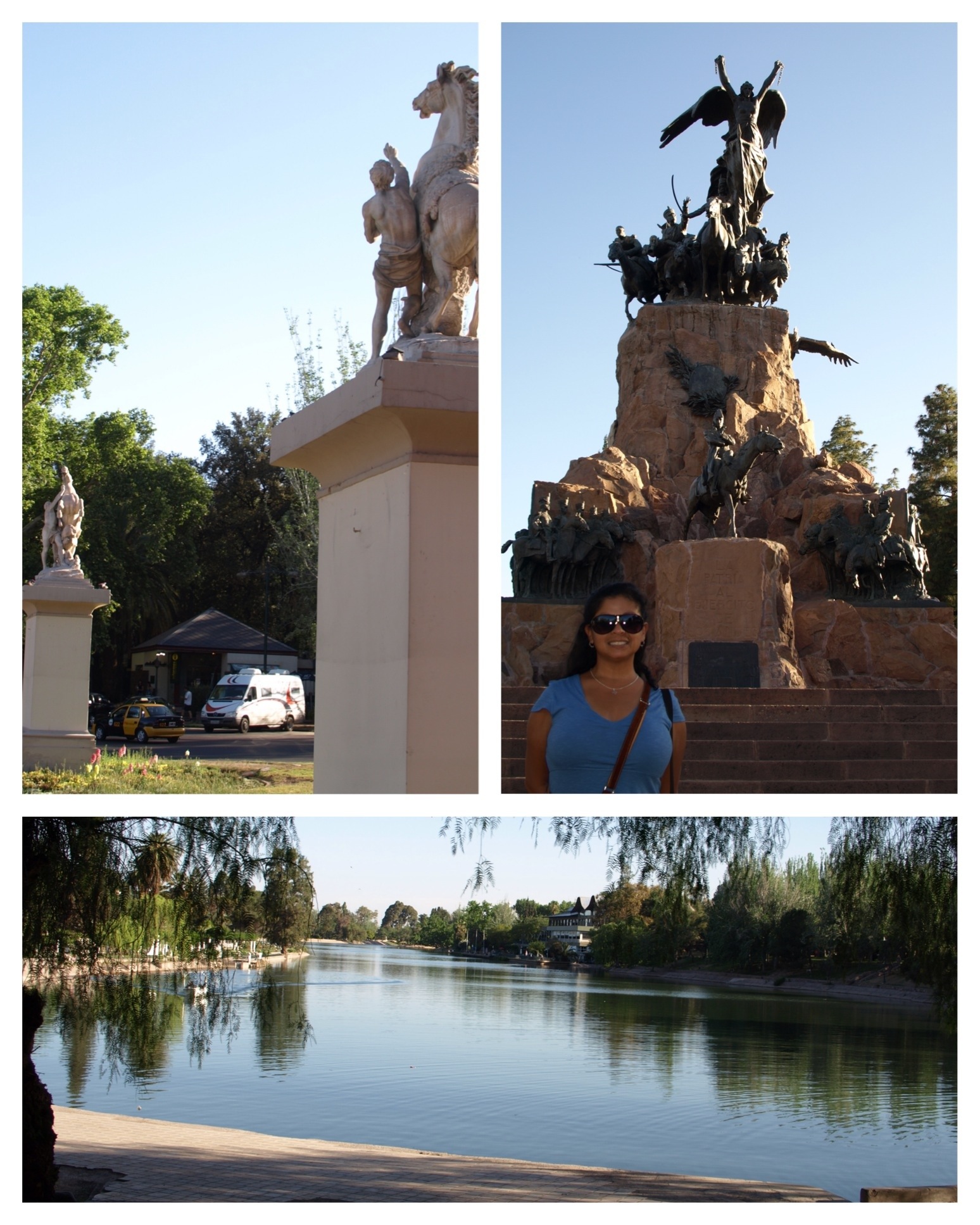
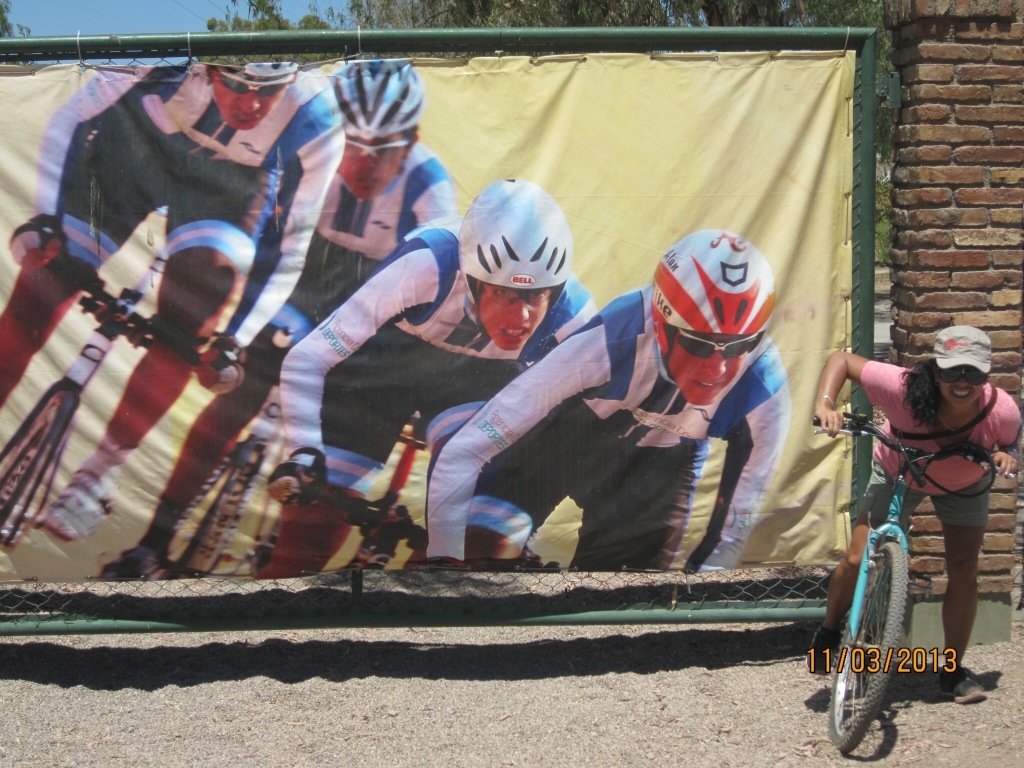
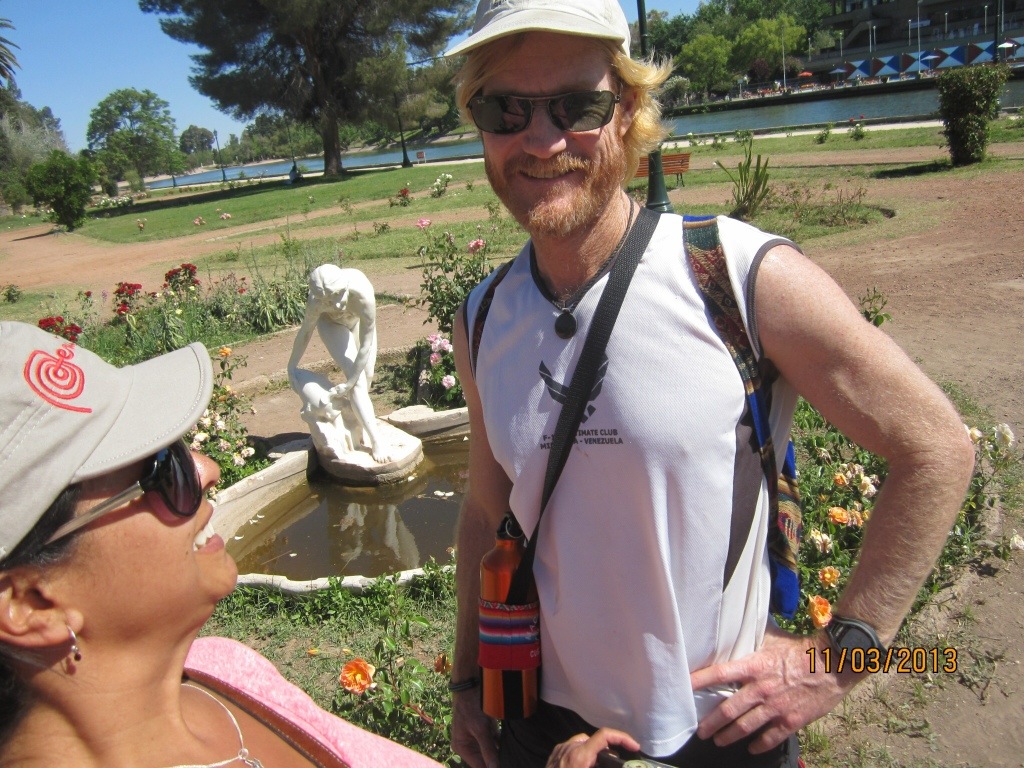
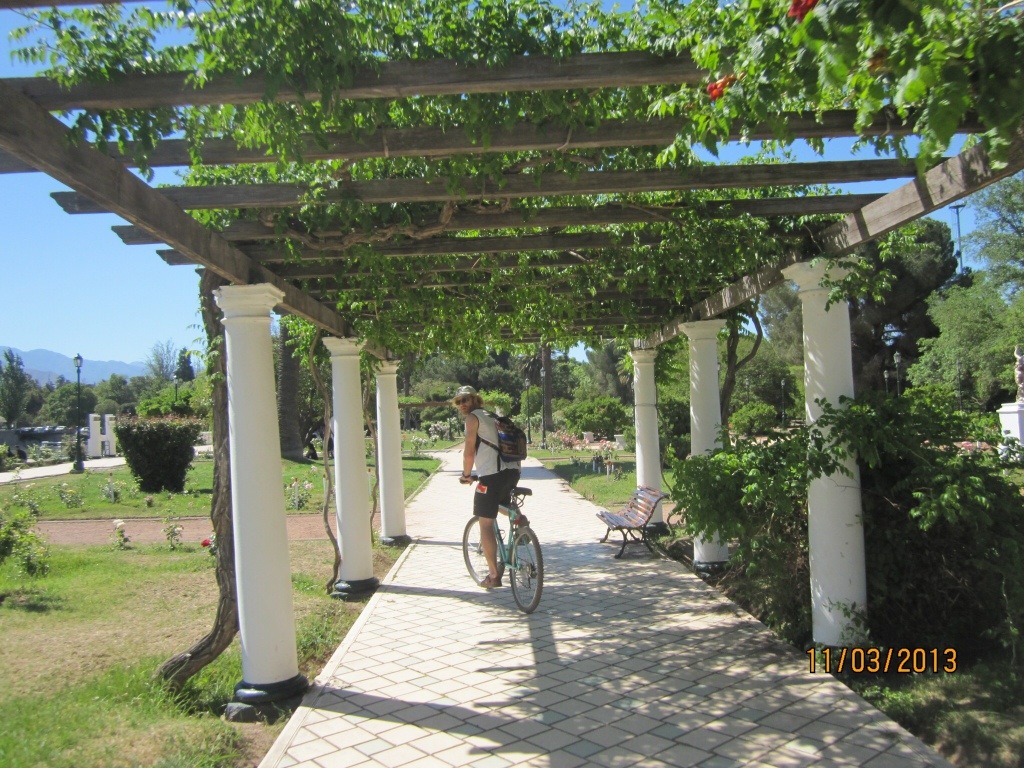
Jessica enjoys an occasional glass of red wine and will typically choose to drink Malbec, if available. Mendoza is Malbec country! There are dozens of vineyards encircling Mendoza, many producing some of the finest Malbec wine in the world.
One day we rented bikes and rode to San Martín park, a huge tree covered green space 15 minutes from the city center. We stopped for lunch at a lakeside cafe and shared a sandwich. Jessica ordered a glass of wine. Moments later the waitress showed up with a bottle. Turns out they don’t sell wine by the glass. Based on the menu price we would never have imagined that little bit of money would get Jessica a bottle of delicious wine. Win!
Trees!
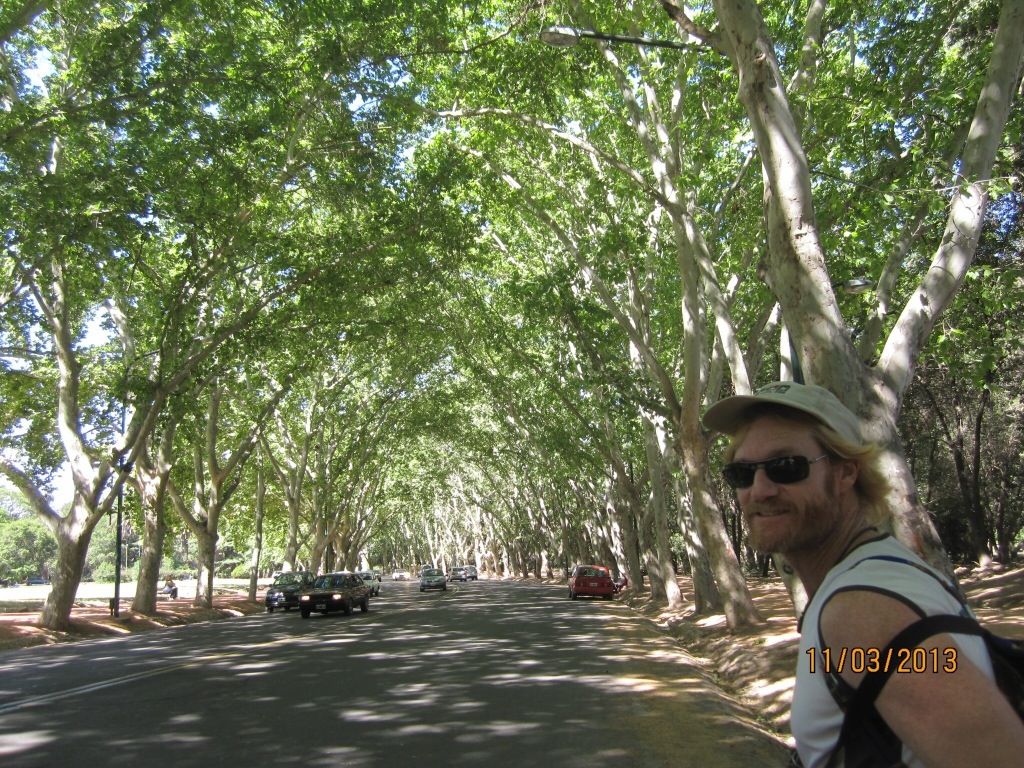
Trees weren’t just in abundance at the park. The designers of Mendoza made sure trees lined every city street. Yes, EVERY street. Tall, green, beautiful trees, spaced about 20 feet apart were planted next to where you’d find the streets’ gutters. And what gutters these were! Except when covered by the mini-bridges that turned into driveways, they were as open as streams and surely keys to keeping the all the city’s trees well-watered. Genius!
Gauchos and Green Tea
Argentina is known the world over for its excellent beef. Based solely on what I would like to be true I’m giving full credit for the succulent steaks to the legendary Argentinian “gouchos” or cowboys. Much like their cowboys cousins in Texas, the gouchos raise cattle and drive them to market once the green grasses of the Argentine plains have sufficiently plumped their rumps.
To get a small taste of the goucho lifestyle, Jessica and I reserved two saddles on a sunset horseback ride. A van picked us up at the hostel around 3 in the afternoon and drove us (and 12 others) out to a small ranch some 30 minutes north of Mendoza. Hot, dry and dusty conditions encased the isolated ranch house. The horses were tied up nearby and our hostess, Sharon, greeted us with a big smile. She let us know we’d be riding soon, but first told us about a rich Argentine tradition– te de mate.
It’s a gesture of warmth and conviviality to share a cup of tea…literally, a cup of tea, as in, one cup of tea for everyone. The host starts it out by adding hot water to a special silver cup, which looks nothing like any tea cup we’ve ever seen before. It’s thick walls and distinctive curves give it the look of a tiny urn more than a tea cup. And then there was the ornately designed silver straw sprouting from its mouth. Before the hot water, in went finely chopped tea leaves, loose in the cup; no tea bag. The cup is passed around for everyone to sip from. Each time it’s sucked dry, the host will refresh the cup with more hot water and then continue passing it around until everyone has shared its warmth.
A goucho enjoying some tea.
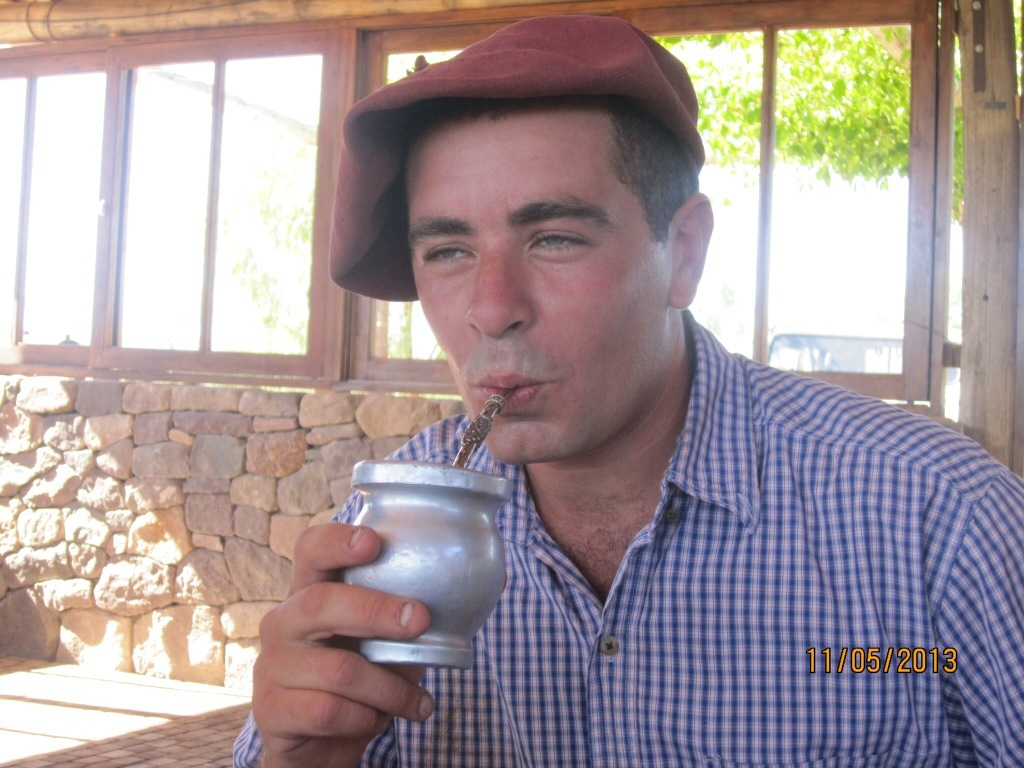
This tradition is not limited to the goucho culture. Perhaps that’s where it started, but we saw the custom in practice throughout Argentina. When it was done for us at the ranch, Jessica and I were lucky enough to be offered the cup first so we didn’t have to partake in anyone else’s babas.
Saddle-up!
The gouchos finished preparing the horses and then joined our tea party just long enough to greet each person with a jovial handshake for the guys and a kiss on the cheek for the ladies. Moments later we all walked over to the horses for 20 seconds of instructions.

About a third of our group had significant prior riding experience, another third just a little, and the final few…none at all. They chose horses for the more experienced riders first. I (perhaps stupidly) raised my hand to be in that group. Even though I am from Texas I have only ridden horses a handful of times. Still, I figured, I have no fear of the beasts. And so my hand was up for one of the first few horses. Jessica hung back and got a later horse.
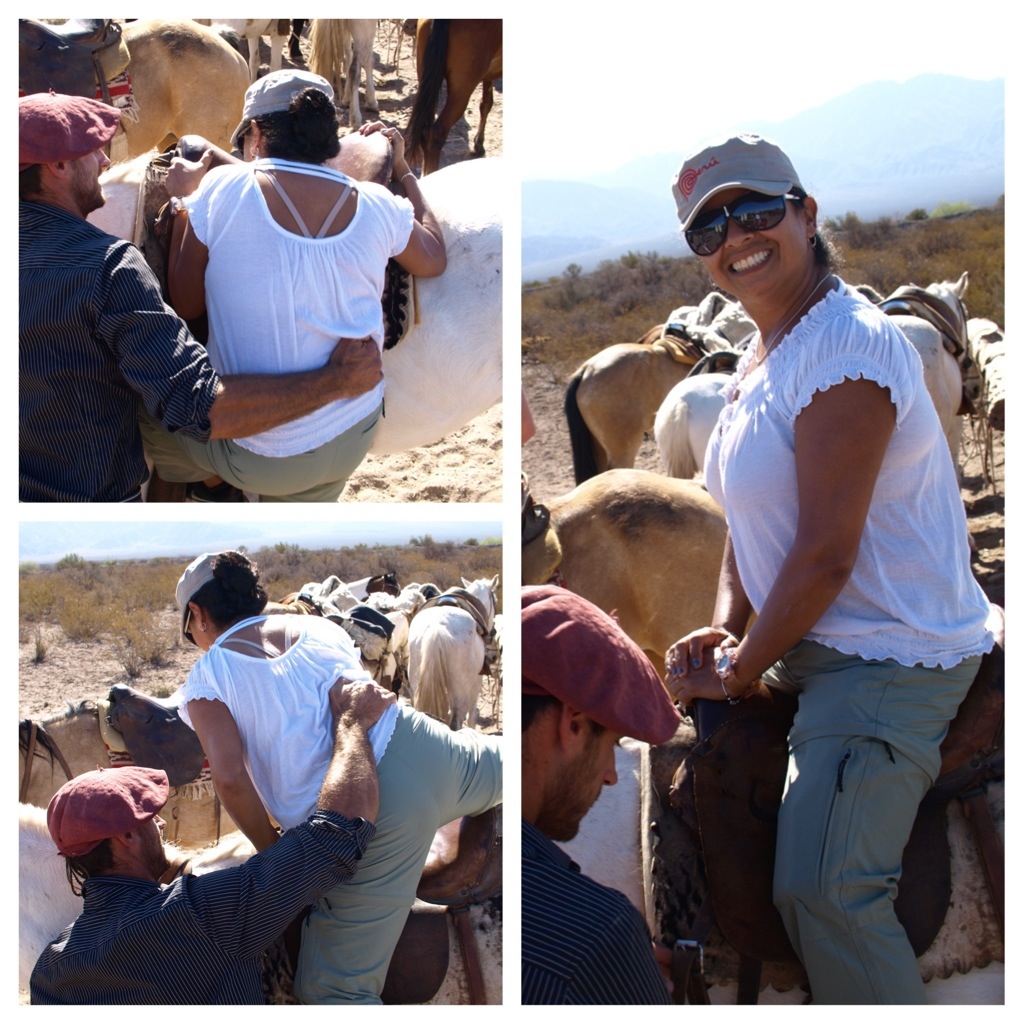
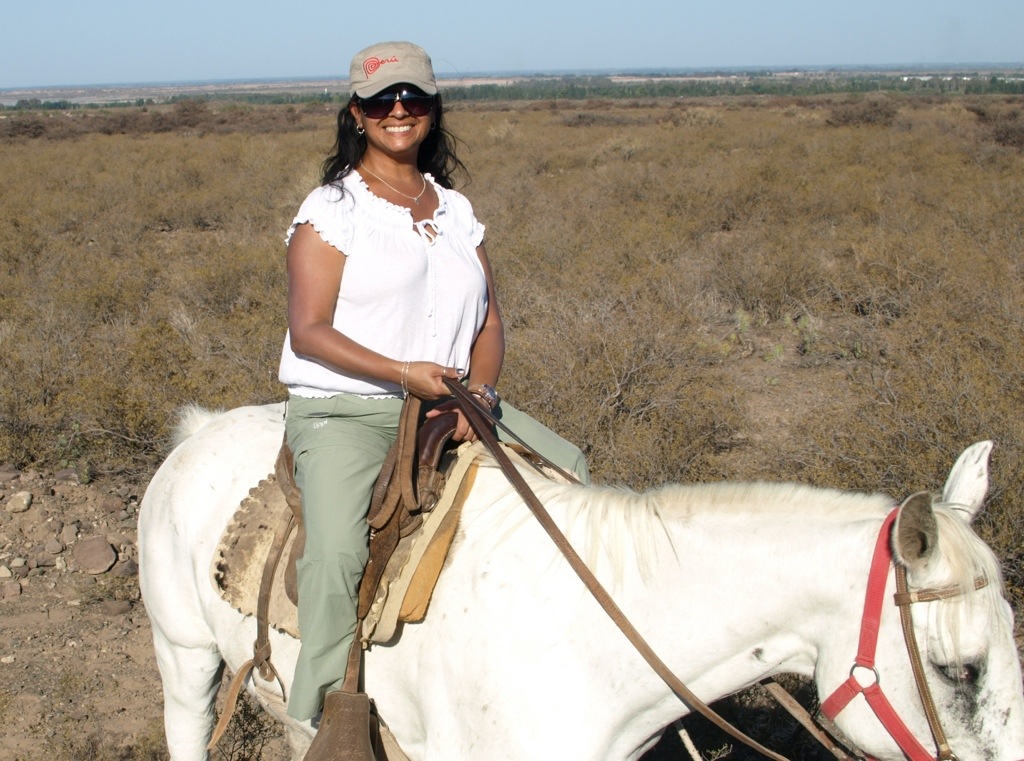
We were told that the herd has its own internal horse-heirarchy. This shows up when they eat together- the higher ranking horses eating first -and it can also come up on the trail- if a lower order horse goes to pass a superior, he may receive a little warning kick. Once we were all mounted up, the gouchos made snicker-click sounds with their mouths to get the horses moving. Riders needed only to sit and look pretty; the horses knew the drill and slowly moseyed single file down the dusty trail…presumably in their correct pecking-order. Jessica’s horse was just in front of mine as our two horses were described as a team with Jessica’s horse being the leader.

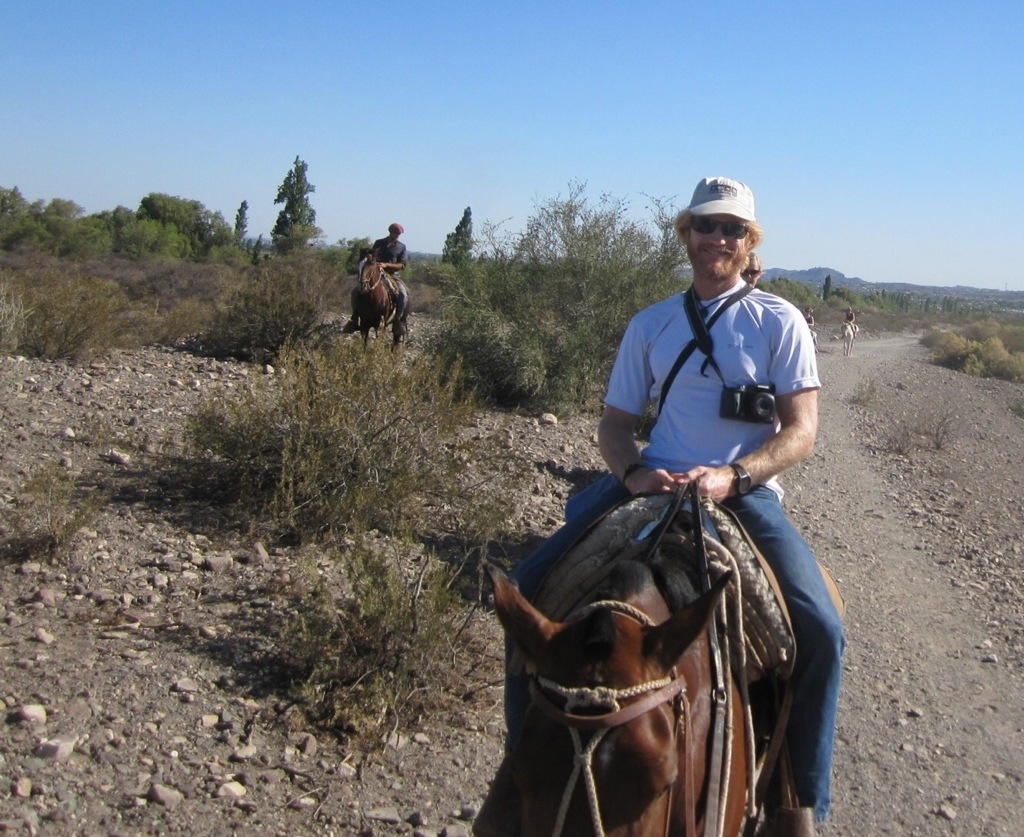
The roads and trails were super dry and dusty. Riverbeds and gullies had no water and all variety of cactus ruled the landscape. We heard it had not rained in eight months. Riding in these harsh conditions prompted me to ponder life on the range. In the distance were the foothills of the Andes mountains. The bright sun approached them from above, we from the east. What if we were not tourists, but real gouchos and this was our life? It’s a two-day ride to make those mountains, boys, and another 10 days to cross ’em. Our ride was relatively short and well-controlled but long enough for contemplation.
The degree to which horses shaped our present-day world cannot be overstated. Early explorers, mapmakers, prospectors, messengers, and warriors (especially warriors), all on horseback…drew the map of our world and defined the countries that share its surface. Think of how many long, lonely rides it took to do it. These were my thoughts as we plodded and sometimes trotted through the desert. Jessica’s thoughts were more centered on the amazing nature of what we were doing. We were riding horses with real gouchos in Argentina! Who’da ever thunk it?
Crazy Horse
Our group of 16 (including the gouchos) became widely spread out along the trail as some horses galloped the trails while others trudged more slowly or paused to munch on some scrub. At one point, my horse was towards the back of the line. I’d stopped to snap some pics, camera in my right hand, reins in my left. My horse seemed tense and fidgety the entire ride; a foretelling of what happened next. One of the gouchos rode up on my right and stopped. For whatever reason, my horse got a bit spooked and dipped his head and shoulders low and to the left. He did this little move a second time and more forcefully. Horse gone wild! The bucking caused me to pitch left until falling off seemed inevitable. In a flash, I imagined my horse galloping out of control across the desert floor with me hanging on for dear life. Better to go with the fall and hope for the best.
I landed on my back-side with my right elbow seeming to take the brunt of the fall. My horse shuffled next to me, but thankfully didn’t catch me with his step. The goucho jumped off his horse right away and asked me if I was okay. For the first few seconds I was not sure if I was okay or not. Give me a minute, I told him. 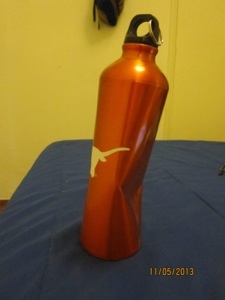 My elbow was bloodied and embedded with gritty-sandy dirt. My right ankle was cut and bleeding, too. The water bottle around my neck got crushed pretty good. I’m not sure exactly how that happened but I’m glad it wasn’t my head.
My elbow was bloodied and embedded with gritty-sandy dirt. My right ankle was cut and bleeding, too. The water bottle around my neck got crushed pretty good. I’m not sure exactly how that happened but I’m glad it wasn’t my head.
Overall, my body checked out okay so moments later I was back on my crazy horse and tepidly riding again. You can see from the pics just how rocky and full of cactus the terrain is. So glad I didn’t fall onto a rock or have my butt impaled by a cactus.
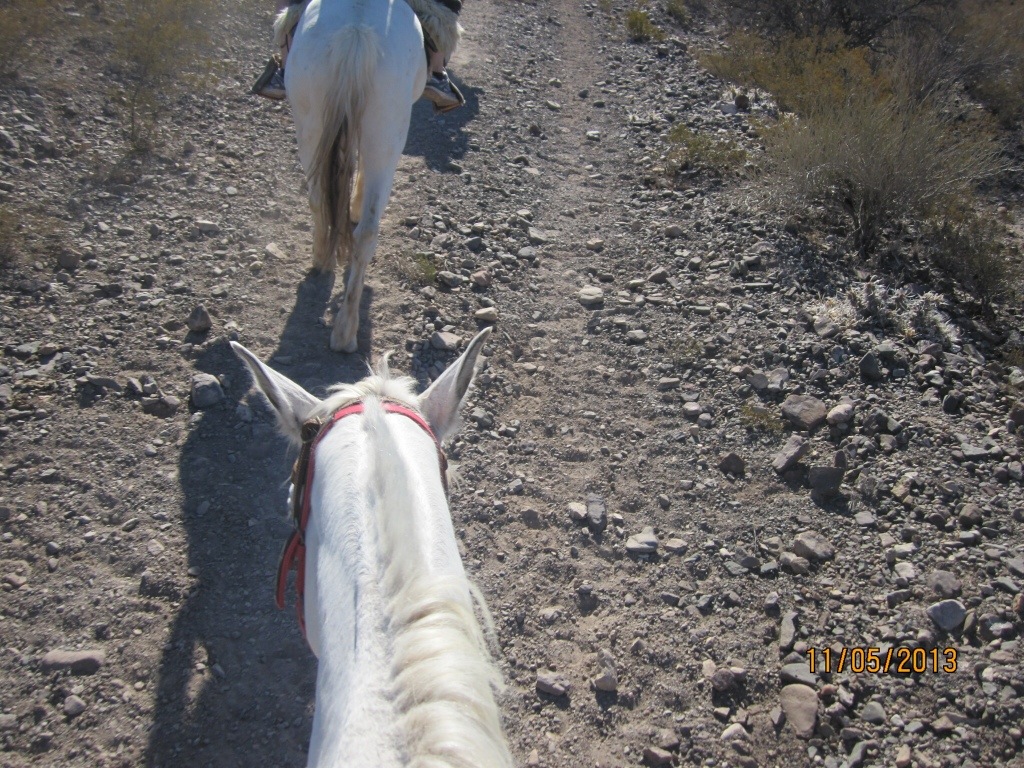
Back at the Ranch
Included in our excursion was dinner- a flank of Argentinian beef cooked over an open flame. The sun set perfectly and the crescent moon and Venus took over the western sky. Stars showed themselves in turn as we drank wine and chatted with others from our group- several from Holland, Norway, Germany, England (Jessica and I were the only ones from the US). Soon the meat was ready and we surrounded the table to feast. Even though I’ve been a chicka-fisha-tarian for decades, I wasn’t going to turn down this traditional Argentinian meal. There’s no denying it, either; it was delicious.
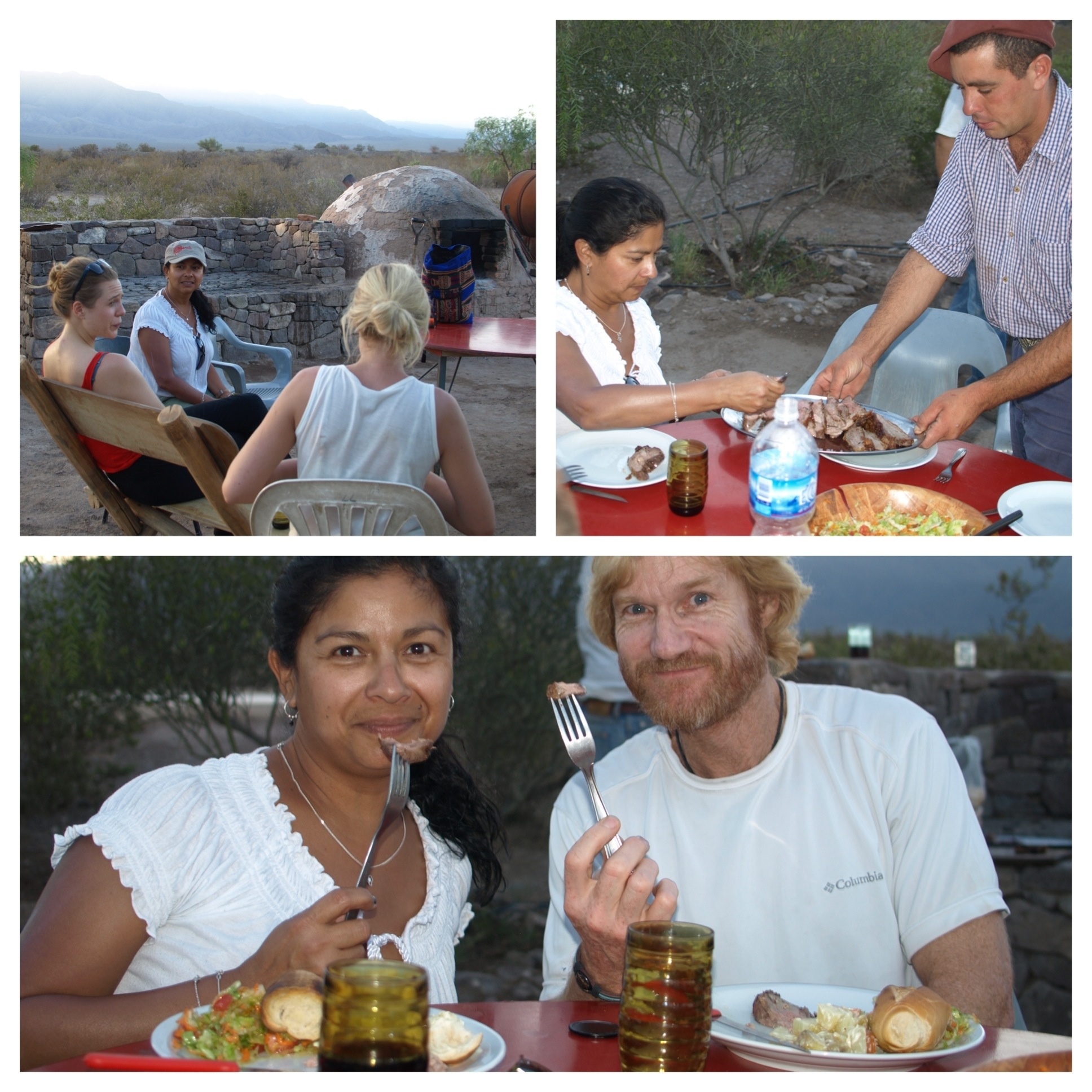
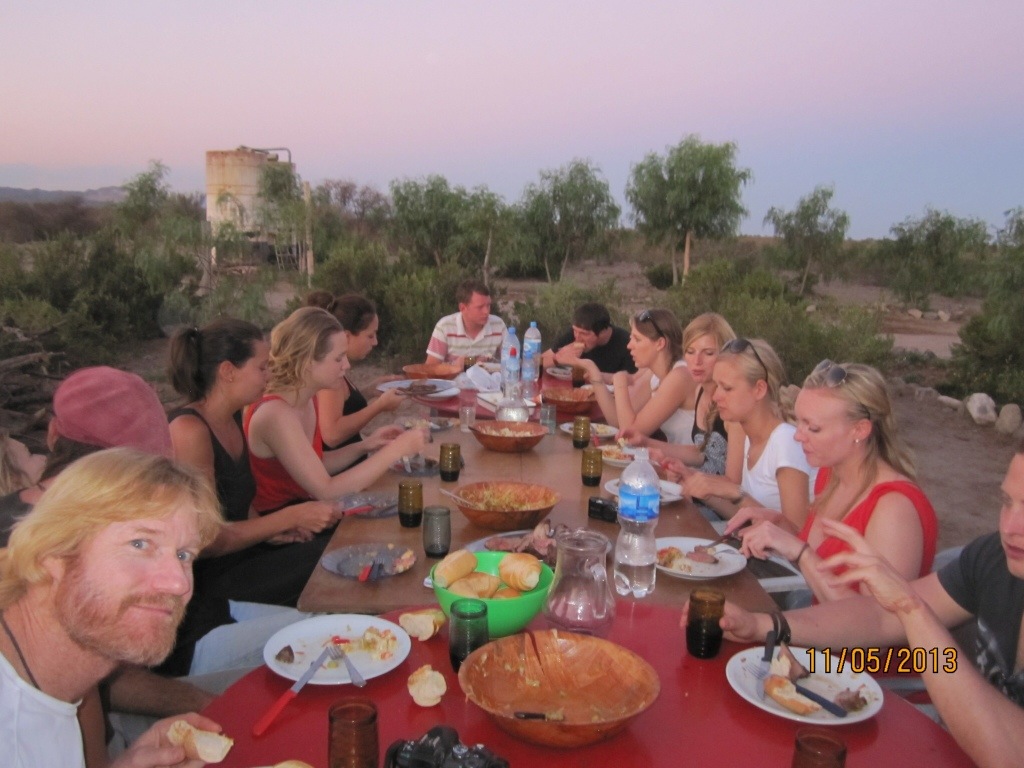
I even tried the wine… with far less success.
After dinner a guitar appeared. Only me and one of the girls from Norway showed any interest in it. The girl had not picked up a guitar in years, but strummed around a bit until a few songs from her past returned to her fingers. I played one of the only songs I’m halfway capable of making it through, Wish You Were Here, by Pink Floyd. When finished, I looked to Jessica and saw her eyes touched with emotion. She explained how the song and its lyrics of longing made her think about all the people in her life that she wished could be there with us in this amazing place and at that beautiful moment. I confessed I was just trying not to mess up the strum pattern.
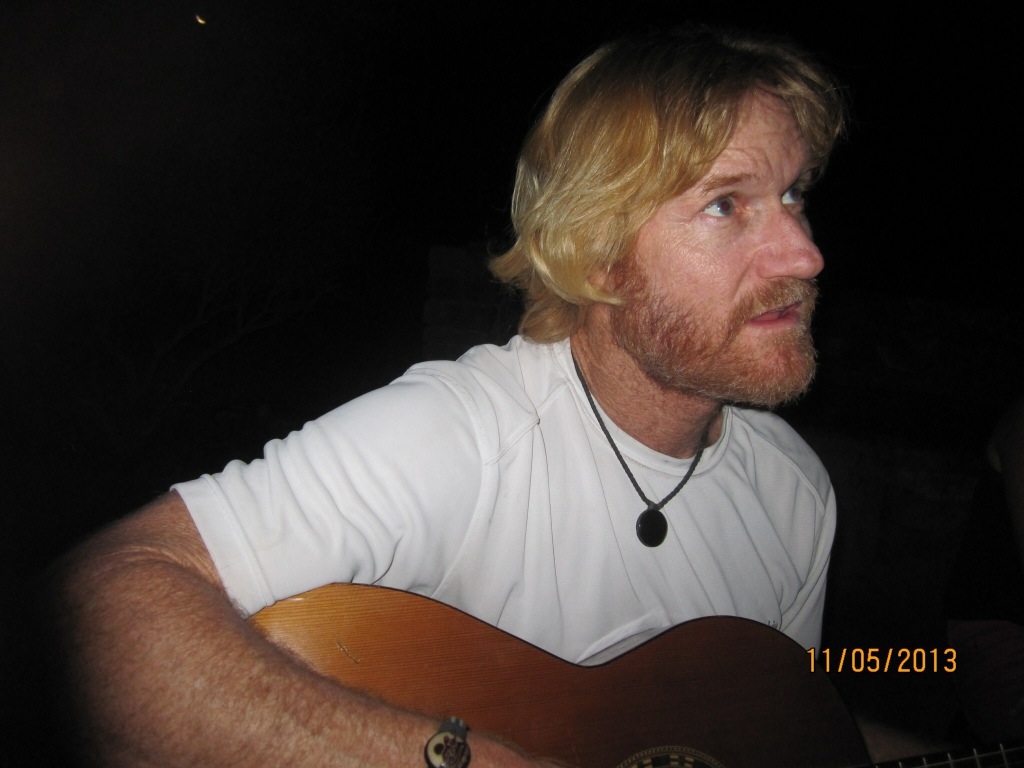
Mendoza at dusk as seen from the ranch.
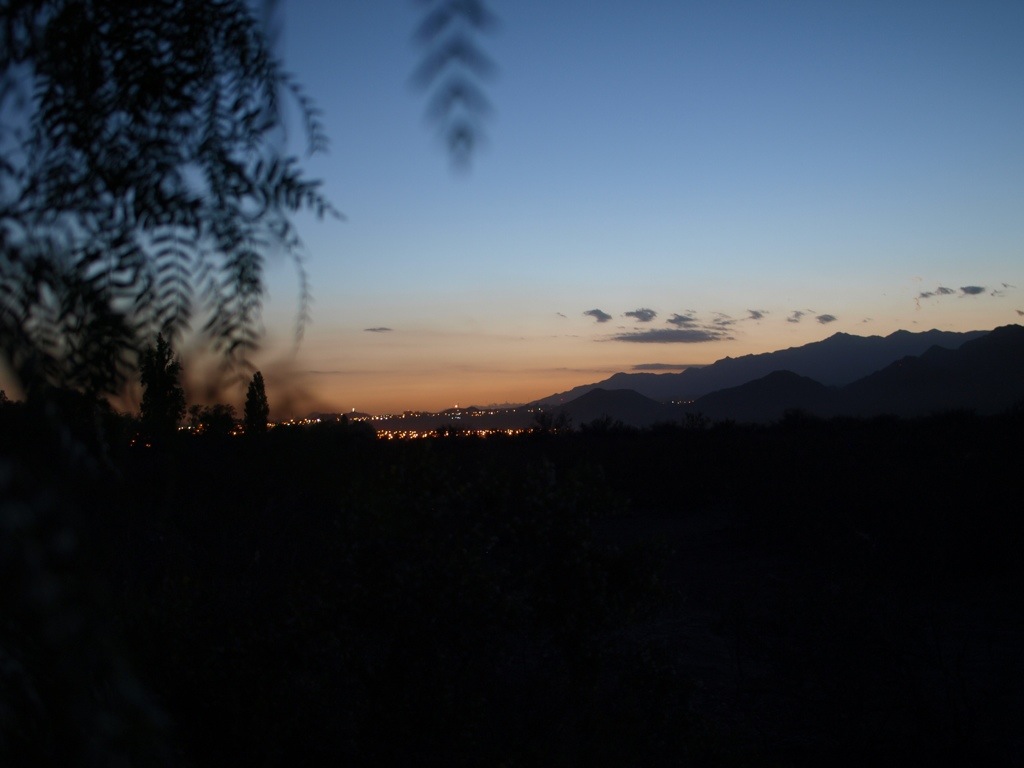
Despite my fall, the sunset horseback ride was definitely a highlight of our stop in Mendoza. Argentina is big country with lots more to see and do. Buenos Aires is still ahead and so are the falls of Iguazu. Even the Straights of Magellan at the southern tip of Argentina are a possibility. Onward we travel…
Here’s another parting look at this impressive monument to General San Martín, liberator of Argentina (from Spain). That’s the general at the front. Notice also the winged angel of liberty breaking the chains of oppression as she leads the soldiers into battle.
